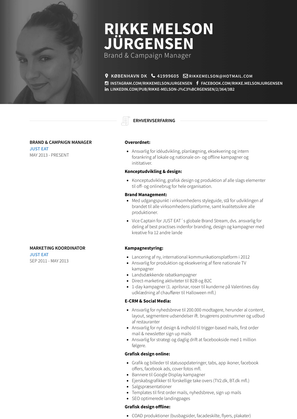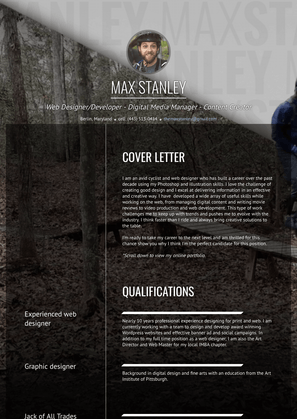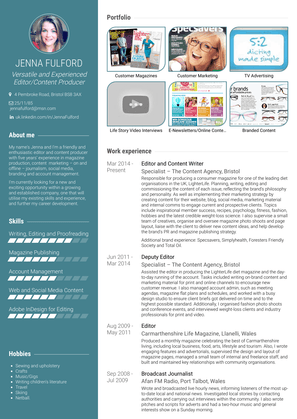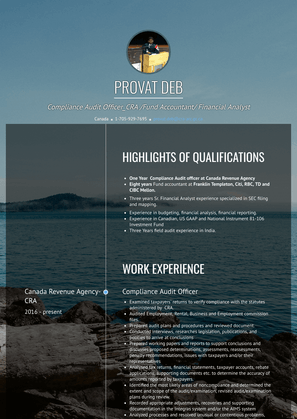IT Resume Examples + Samples for 2025
This page provides you with IT resume samples to use to create your own resume with our easy-to-use resume builder. Below you'll find our how-to section that will guide you through each section of a IT resume.




Overview
Almost every business runs on information technology, which means that almost every business needs IT staff. Working in IT, and helping to maintain the systems that underpin institutions all over the world, can give you a stable career that really lets you apply your skills. If you know the difference between a hybrid cloud and a public cloud, or if you can spot the best type of database for the job at hand, you might just thrive in IT!
And according to the US Bureau of Labor Statistics, the IT industry is thriving in its own right. Job growth across IT-related occupations is estimated at 15% between 2021 and 2031 – that’s well above average. Even better, you can expect a robust salary, with the median average annual wage reaching $97,430 in 2021.
But despite the high levels of demand for IT professionals, getting the job you want may not be as easy as you think. Because IT is so important to businesses, they have high standards when it comes to hiring relevant staff. That’s why we’ve written up this helpful guide to building the best IT resume.
We’ve provided example resume segments, dos and don’ts for the resume-writing process, and hot tips on how to make your resume even better. Read on, and you’ll be building your first resume in no time!
What is IT?
IT, as a field, is all about repair and maintenance. Unlike computer science, which tends to focus on building new software and systems, IT focuses on keeping software and systems up and running at maximum efficiency. IT professionals tend to apply their knowledge of computing to positions that support businesses – they’re the people who maintain the infrastructure that so much of modern work depends on.
Jobs in the IT field include:
- IT Technician
- Database Administrator
- Network Administrator
- Network Engineer
- IT Security Specialist
- IT Auditor
- IT Project Manager
Without any past experience in IT, you will probably have the most luck finding an entry-level job as an IT technician. Once you’ve put some time in, and proven that you have the ability to progress further, you may be able to advance to more senior roles in IT administration or project management. The right certification, too, can help you to show that you have the specialized skills you need for more advanced jobs in IT.
Anyone who works in IT will need an in-depth knowledge of computing technology – encompassing systems, networks, databases, and software. You’ll need to be able to explain that knowledge to other people effectively, while helping them when their IT provision doesn’t work as intended. And you’ll also need strong time management and personal organization skills, as no two days in IT are ever exactly the same.
While a degree can be a big help when applying for any job, it’s a myth that you need a degree – regardless of the subject – to get a job in IT. In fact, a high proportion of IT professionals don’t have a degree at all. As long as you can show that you have the right skills to succeed, this is a field where it’s perfectly possible to get ahead without investing time and money in a college education.
How to Write an IT Resume
As an aspiring IT professional with no experience, your resume needs to make two things clear. The first is that you have the qualifications you need for the role you want. The second is that you have all the skills you will need to thrive in the role.
Of course, writing a resume when you don’t have much directly-relevant work experience can be intimidating. But especially in entry-level IT roles, your professional experience may actually be less important than your skills. Many recruiters say that they hire for IT and computer science roles based on proven ability, rather than on educational background.
As a general rule, you should make sure that your skills (and if you have them, your qualifications) are at the heart of your resume. But remember that there are other ways to acquire experience than getting a job. In a field like IT, it can be helpful to build experience by working on personal projects – building and maintaining a website, an app, or a database – regardless of whether you get paid for them.
As a rule, an IT resume written by someone with little to no work experience should contain the following:
- A summary
- Your education
- Any experience you have, including any personal projects you’ve worked on
- Your skills, including any certifications or licenses you have
Boost your IT career with a professionally crafted resume. Our IT resume writing service highlights your technical expertise, problem-solving skills, and industry impact to help you stand out in the competitive tech job market.
The Best Format for an IT Resume
The format of your resume determines what hiring managers will see first when they pull it out of the pile. When choosing your professionally-designed IT resume template from our selection, keep that in mind, and think about what your potential employer needs to see from you. In IT, that will usually be your skills – like the software packages and coding languages you know how to use – so you should consider a format that leads with that section.
This is especially true for people with limited work experience in the field, since the section listing your past work experience may not be the strongest. Later in your career, once you’ve held down a job or two in IT, you should think about choosing a format that balances your skills with your work experience.
Remember that many hiring managers use an applicant tracking system (or ATS) to sort through the resumes they receive. This helps companies streamline their hiring process, which is great for them – but it means that if your resume can’t make it past the ATS software, it may never be seen by a person. ATS software usually looks for specific keywords based on the job description, so if you don’t keep that in mind, you run the risk of losing the role before the hiring process has even begun.
ATS software can also be confused by intricate resume formatting. Thankfully, all of VisualCV’s resume templates are designed to beat ATS software. None of our templates will confuse ATS software, so you can proceed with confidence and focus on fine-tuning the content of your resume instead.
3 IT Resume Examples
Most resumes begin with a summary, which makes your summary one of the first things a recruiter will see about you. It should be a short, to-the-point encapsulation of your best qualities. It should also reflect the requirements set out in the job description – which means you can’t get away with using the same summary for every application!
Since you won’t have much work experience, focus your summary on your skills and qualifications. Later in your career, you can focus on your past experience instead – along with the skills and qualities that experience demonstrates about you.
3 summary examples:
- IT Technician with a 3.7 GPA from New York University. Experience in building and maintaining websites, databases, and networks. Looking to embark on a lifelong career in IT support.
- Cybersecurity professional with volunteer experience in systems maintenance. Proficient in Python, HTML/CSS, Kotlin, and JavaScript. Driven, professional, and focused on delivering great customer service.
- Network engineer with experience developing for the Cloud. Proficient in AWS and Microsoft Azure. A customer-focused individual with the training and perspective needed to help your business thrive.
How Not to Write an IT Resume Summary
As we’ve discussed, your summary needs to be clear and direct, with a focus on what you can offer to your employer. It needs to tell a recruiter directly why you meet the requirements for the job you want. Keep the wordy, personal spiel to your cover letter – it doesn’t belong in your resume summary.
And remember, some recruiters don’t agree that a summary is necessary. If you’re struggling to get your summary right, you can always leave it out.
Don’t:
- A digital native, I have always taken pride in helping older family members to become familiar with technology. That early enthusiasm has driven me to teach myself the intricacies of IT, and to pursue my degree at Stanford University. I am now hoping to apply that drive to a career in IT support.
Do You Need a Resume Objective?
We’ve talked about resume summaries – but what’s an objective?
In brief, a summary is a description of the qualities and skills that make you suitable for a job. An objective is even shorter than a summary, and it sets out your career goals, such as the industry or type of role you want.
For non-entry-level roles, you won’t usually need an objective. But if your work experience is a little lacking, consider including an objective to support your resume summary.
IT Resume Objective Example:
- Database administrator with a BSc in Information Technology, seeking to build a new career in IT support.
How to Describe Your Experience on Your IT Resume
The most important thing to remember is that not all experience comes from paid work! You may have volunteering or internship experience that could help you build a more substantial experience section on your resume. You may even have worked on computing projects in your own time, which could give you some directly relevant experience for a job in IT.
All of this experience can and should be included on your resume, provided it has some relevance to the job. If you’re not sure, take a look at the job description. If your experience proves that you have a skill or quality required for the role, it’s good to go.
Describe Your Experience Effectively
When writing about your experience, make sure you write about what you actually accomplished when carrying out each task. Recruiters will be looking for hard facts about your success in previous roles. If you can show solid evidence that your work has yielded results, they will be more ready to believe that you can repeat those results in a new position.
That’s why, wherever you can, you should point out the results you achieved in previous positions. If you have hard statistics, so much the better! But results can be as simple as faster completion times, satisfied customers, or praise from a supervisor.
IT Resume Experience Example:
Do: Volunteer Cybersecurity Consultant, Eastside Youth Center | 2019
- Liaised with the client to identify cybersecurity concerns around their website
- Reconfigured the website to eliminate holes in security, protecting the website from data breaches and vandalism
- Worked with the client to maintain the website, responding to any new security threats as appropriate
How Not to Describe Your Experience
The number one thing you shouldn’t do when writing about your experience is simple: don’t just write a list of the tasks you carried out! You need to show hiring managers that you could do those tasks well, and get results while doing them. A list of your responsibilities, with no further context, won’t tell them anything new or compelling about you as a candidate.
Don’t: Volunteer Cybersecurity Consultant, Eastside Youth Center | 2019
- Consulted the client
- Updated the website
- Maintained the website
How to List Skills on Your IT Resume
When you’re listing skills on your resume, the job description for the role you want can be a useful guide. It will usually contain a list of the skills you’ll need to have a chance at the role. But you should remember that recruiters will expect you to have certain skills as a matter of course – and they may not be listed as part of the job description.
For general information about skills on your resume, check out our resume skills guide here!
Top IT Resume Skills in Demand
| Hard Skills for IT | Soft Skills for IT |
|---|---|
| Technology skills | Communication |
| Security knowledge | Organization |
| Software development knowledge | Attention to detail |
| Analytical skills | Time management |
| Technical writing | Creativity |
| Mathematical skills | Collaboration |
| Planning skills | Leadership |
| Problem-solving | Training and coaching skills |
Professional Certifications in IT
Certifications are a great way to prove that you take your work seriously, and that you’re willing to take the initiative to develop professionally. They’re also excellent proof of your skills, which can give you a real edge if you don’t have much work experience. If you have the opportunity, we always recommend looking into certifications in your field – and IT is no exception.
Here are some of the most common IT certifications!
Certified Information Systems Auditor (CISA) CISA is one of the oldest IT certifications out there, and it is still considered one of the best. It validates your cybersecurity, risk management and auditing skills, all of which are still in high demand. All you have to do is sit an exam – so if you’re looking for a career as an IT auditor, this could be a great place to begin.
Project Management Professional (PMP) This certification, ideal for IT project managers, was created by the Project Management Institute. Though it doesn’t necessarily specialize in IT skills, its focus on project management will give you a vital transferable skill set.
Google Cloud Professional Data Engineer High demand for cloud data management skills has made this certification extremely popular. Google offers extensive free preparatory material to help you get ready for this certification’s exam. Keep in mind, though, that you will need a bachelor’s degree in a relevant subject to pursue this certification.
The Most Important Soft Skills for Your IT Resume
It goes without saying that hard skills are crucial in IT – but you shouldn’t neglect your soft skills, either. They will give you an advantage in every area of your working life. Plus, if you don’t have much experience, soft skills can show an employer that you’re equipped to thrive in the role of your dreams.
Here are some of the most important soft skills to include on your IT resume!
Communication Being able to explain complex information in an accessible way is a vital skill in IT. Whether you’re talking to fellow IT professionals or assisting non-IT colleagues, you’ll need to be able to boil down complex concepts into easy-to-understand explanations. Strong communication skills will give you a real advantage from day to day.
Organization Particularly as an IT technician, your job will never look the same from day to day. You’ll need to be able to plan and manage your time effectively in order to deliver great service. Organization is a huge part of that, and it will stand you in great stead when applying for your first IT role.
Attention to detail When it comes to computing, the details really do matter. In IT, paying attention to the fine details could help you solve problems more quickly, or even prevent them before they arise. It will make you a more efficient employee, which is something any employer will take seriously.
IT Salaries
Salaries in IT tend to err on the higher side, relative to other industries. But exactly how much can you expect to make?
IT is a broad church, and your salary will vary depending on your experience level, the role you work in, and the amount of time you’ve worked in that role. But in general, Indeed reports salaries ranging from $36,800 to $121,000 for IT specialists in the US. Building more experience, qualifications and certifications could help you boost your salary to the higher end of that scale.
Final Thoughts
IT offers a wide range of roles and opportunities to anyone with the right set of computing skills. Regardless of your educational background, you will likely be able to find a role that suits you. And with job growth high across the IT industry, we’re confident that you will find the job of your dreams in no time!
Remember, a VisualCV Pro membership can give you the edge over your competition. Pro membership enables you to customize every aspect of your resume, so you can show hiring managers your very best self. It’s a head start you can’t afford to lose.
Copyright ©2025 Workstory Inc.
